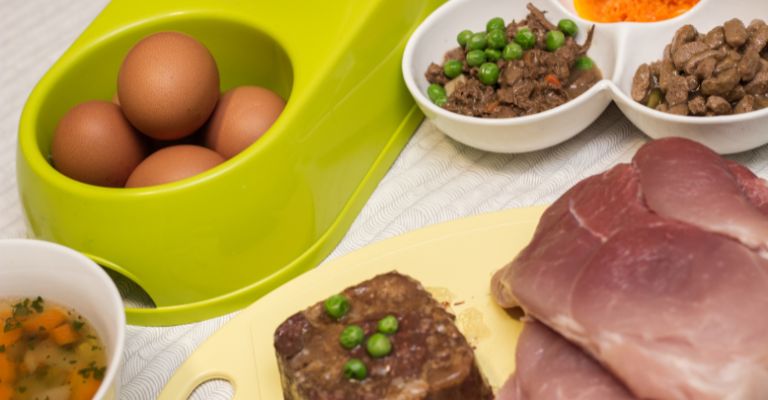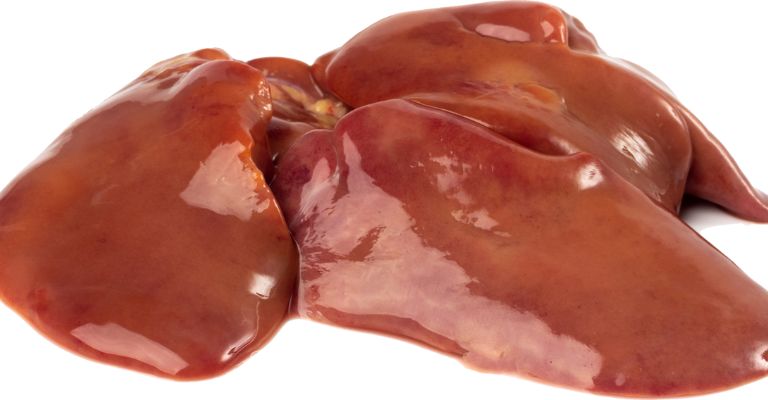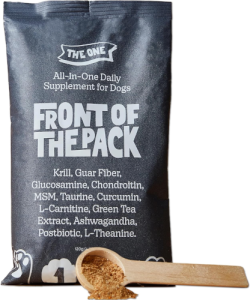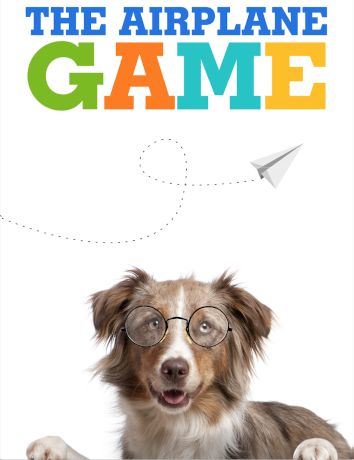If you’re a dog owner looking to provide your furry friend with a nutritionally balanced diet without breaking the bank, you’re in the right place. In this article, you’ll discover five practical tips for feeding your dog raw food on a budget. From finding affordable sources of raw meat to incorporating cost-effective supplements, these budget-friendly strategies will help you prioritize your pup’s health without sacrificing your wallet. So, let’s jump in and explore how you can provide your dog with the nutrition they need, all while keeping your expenses in check.

1. Plan Your Budget
1.1 Determine Your Monthly Budget
When it comes to feeding your dog a raw food diet on a budget, the first step is to determine how much you can afford to spend each month. Take a look at your monthly income and expenses to get a clear idea of how much you can allocate towards your dog’s food. By setting a budget, you’ll be able to plan your expenses and make sure you’re not overspending.
1.2 Allocate Properly
Once you have established your monthly budget, it’s time to allocate the funds appropriately. Divide your budget into different categories, such as protein sources, raw food options, and supplements. By assigning specific amounts to each category, you can ensure that you’re spending your money wisely and getting all the necessary nutrients for your dog.
1.3 Keep Track of Expenses
To stay on top of your budget and track your expenses, it’s important to keep a record of all the purchases you make for your dog’s raw food diet. This includes the cost of protein sources, raw food options, as well as any supplements or additional items you buy. By regularly reviewing your expenses, you can spot any areas where you might be overspending and make adjustments accordingly.
2. Choose Cost-Effective Protein Sources
2.1 Chicken and Turkey
When it comes to cost-effective protein sources for your dog’s raw food diet, chicken and turkey are excellent options. These meats are typically more affordable compared to other protein sources, such as beef or lamb. Look for discounted cuts or purchase them in larger quantities to save even more money. Remember to remove any bones before feeding them to your dog.
2.2 Beef and Pork
Beef and pork can also be cost-effective protein sources for your dog’s raw food diet. Look for discounts or sales at your local grocery store or butcher shop. Buying larger cuts of meat and then portioning them yourself can be a great way to save money. Remember to trim off excess fat before feeding it to your dog, as too much fat can lead to digestive issues.
2.3 Offal and Organ Meats
In addition to muscle meats, incorporating offal and organ meats into your dog’s raw food diet is not only cost-effective but also beneficial for their overall health. These cuts, such as liver or kidney, are typically less expensive and readily available at many butcher shops. They are rich in essential nutrients and vitamins that contribute to a well-balanced diet for your dog.

3. Utilize Economical Raw Food Options
3.1 Buying in Bulk
One of the most effective ways to save money on your dog’s raw food diet is by buying in bulk. Look for wholesale or bulk options for protein sources and raw food options. Consider joining a local raw feeding group or co-op that offers discounts on large quantities of raw food. By buying in bulk, you can often get better prices and minimize packaging waste.
3.2 Local Butchers and Farmers
Another great way to save money on raw food options is by establishing relationships with local butchers and farmers. They may provide you with discounted or free cuts of meat that are not suitable for human consumption but are perfectly fine for your dog. This not only helps you save money but also supports local businesses and promotes sustainability.
3.3 Cooperative Buying
Cooperative buying is a fantastic way to save money on raw food options for your dog. Consider joining or starting a raw food co-op in your area. This allows you and other pet owners to pool your resources and purchase raw food in larger quantities directly from suppliers at discounted rates. By working together, you can all enjoy the benefits of a raw food diet while saving money.
4. Optimize Nutritional Balance
4.1 Variety is Key
Ensuring a balanced and nutritious diet for your dog is crucial, even when feeding raw food on a budget. To optimize the nutritional balance, aim for a variety of protein sources, including different meats and offal. This diversity helps provide your dog with a wide range of essential nutrients, while also preventing boredom with their meals.
4.2 Include Fruits and Vegetables
In addition to protein, it’s important to include fruits and vegetables in your dog’s raw food diet. These ingredients add essential vitamins, minerals, and antioxidants to their meals. Opt for affordable options like carrots, sweet potatoes, and leafy greens. You can also consider growing your own produce, which not only saves money but also ensures freshness and quality.
4.3 Add Supplements Wisely
While raw food provides many nutrients, it’s essential to include supplements to ensure your dog’s optimal health. Consult with a veterinarian to determine which supplements your dog may need. Instead of buying expensive pre-made supplements, you can often find more affordable options in the form of individual supplements, such as omega-3 fatty acids or probiotics, which can be added to their meals.

5. Do-It-Yourself Preparation
5.1 Prepare Meals in Bulk
One of the most cost-effective ways to feed your dog raw food is by preparing meals in bulk. Take a day each week or month, depending on your schedule, to batch prepare your dog’s meals. Portion the food into individual servings and store them in freezer-safe containers. This not only saves time but also allows you to take advantage of bulk discounts when purchasing ingredients.
5.2 Safe Handling and Storage
Proper handling and storage of raw food are crucial to ensure your dog’s safety and prevent any potential contamination. Always wash your hands and clean any utensils or surfaces thoroughly after handling raw meat. Store raw food in a dedicated freezer to keep it fresh and prevent the growth of harmful bacteria. It’s essential to follow best practices to maintain the food’s quality and safety.
5.3 Make Use of Leftovers
Another way to save money on your dog’s raw food diet is by making use of leftovers. If you have any leftover cooked meats or vegetables from your own meals, you can incorporate them into your dog’s diet. However, ensure that the leftovers are safe for your dog to consume, without any seasoning or additives. This is not only a cost-effective approach but also reduces food waste.
By following these tips, you can provide your dog with a nutritious raw food diet while staying within your budget. Remember to plan your budget, choose cost-effective protein sources, utilize economical raw food options, optimize nutritional balance, and embrace do-it-yourself preparation. Feeding your dog raw food on a budget is not only financially smart but also a great way to prioritize your furry friend’s health and well-being.


